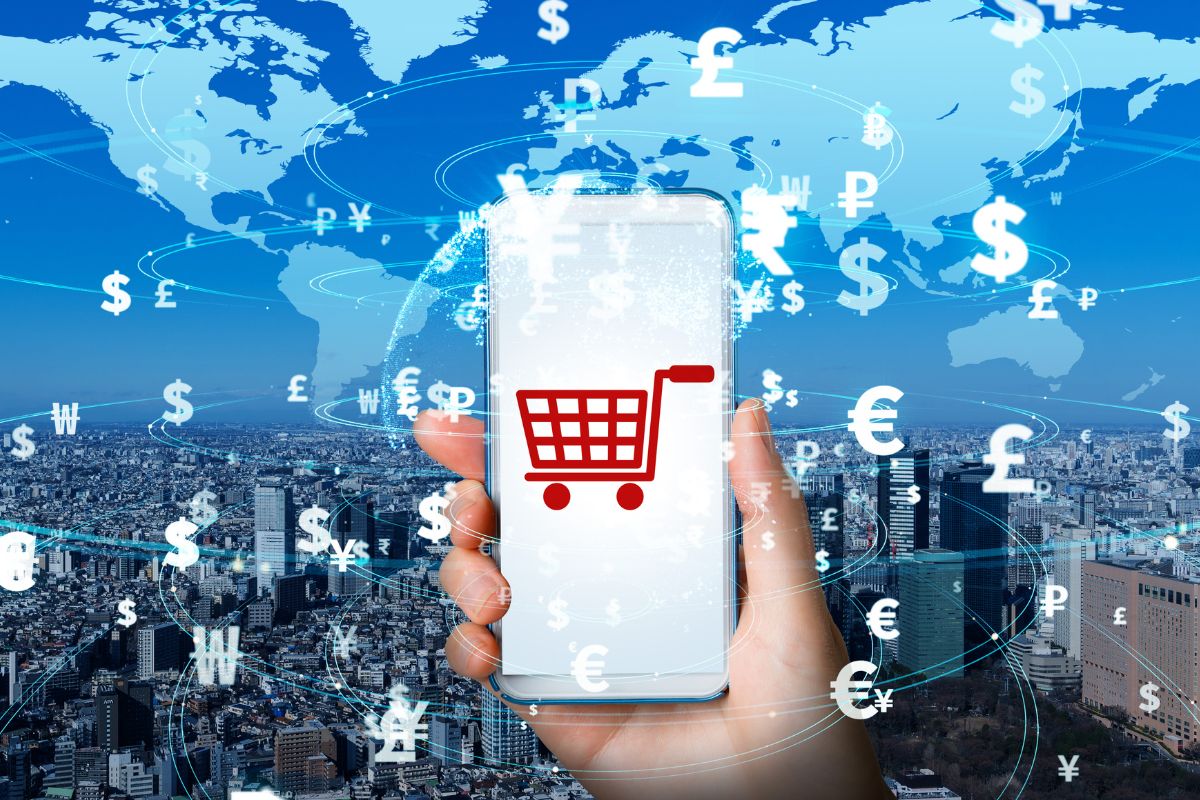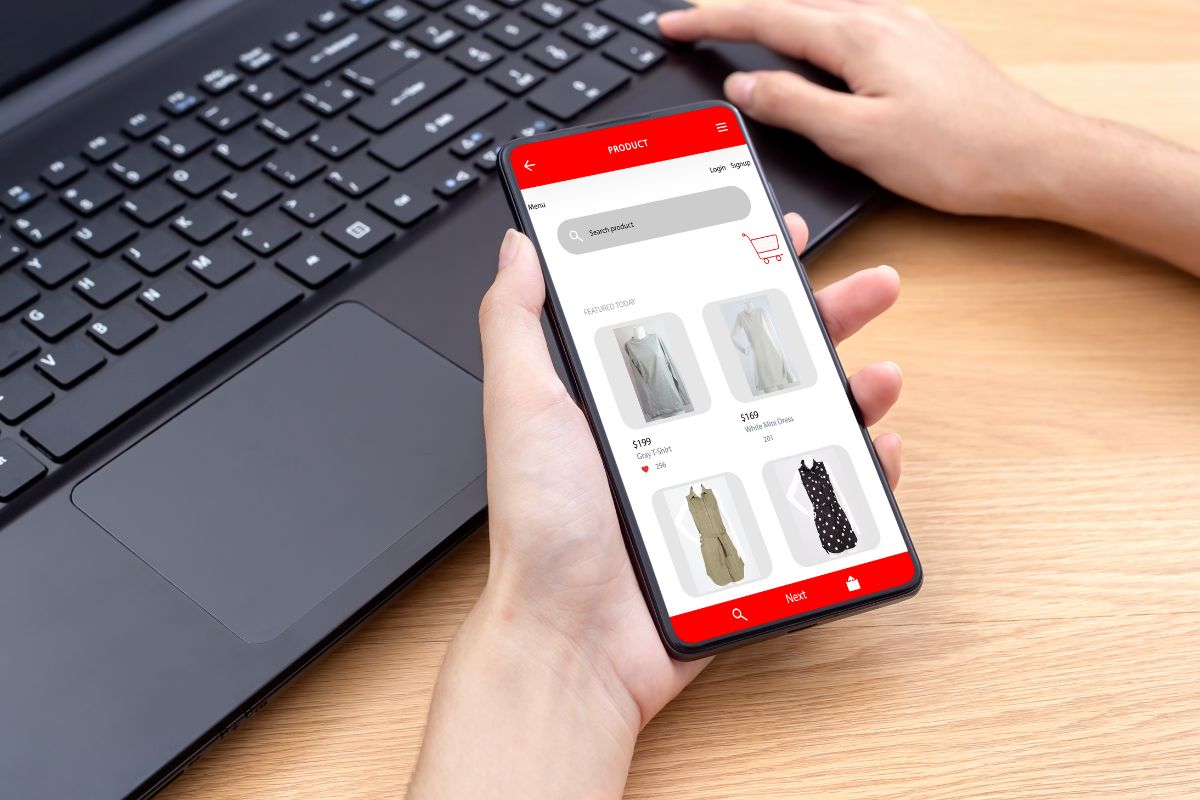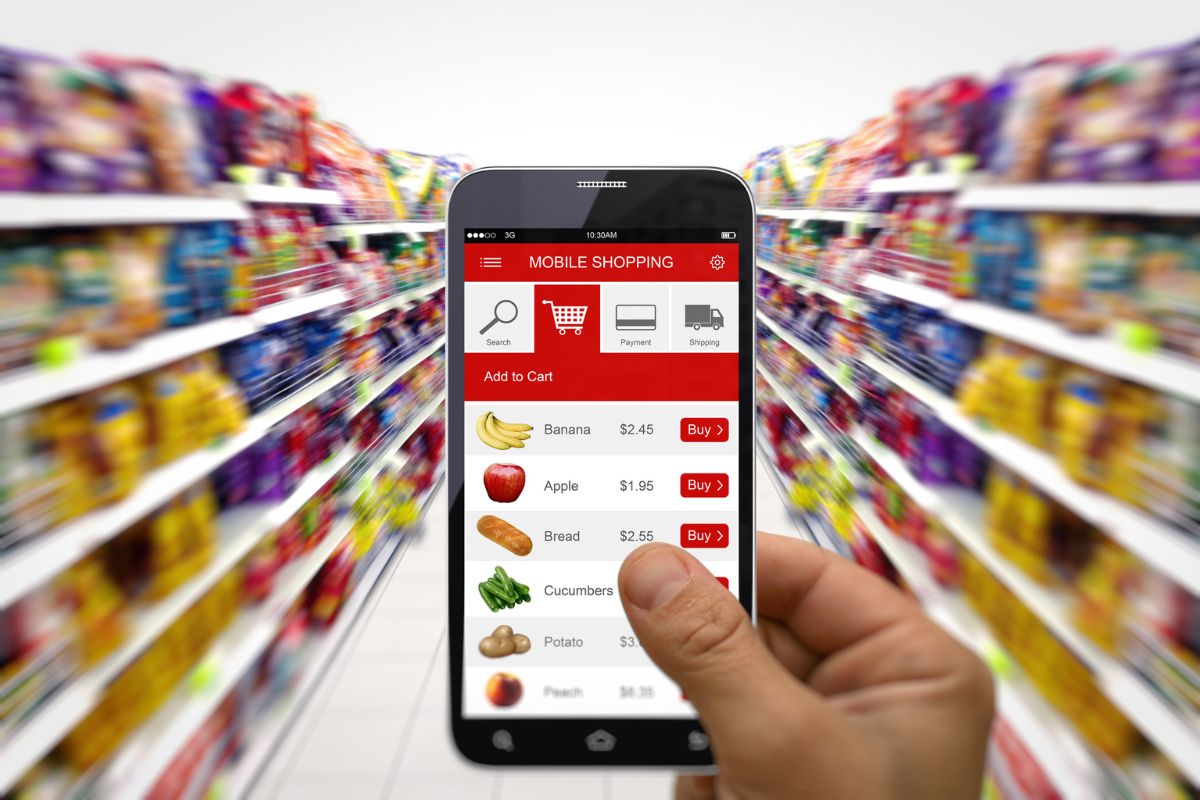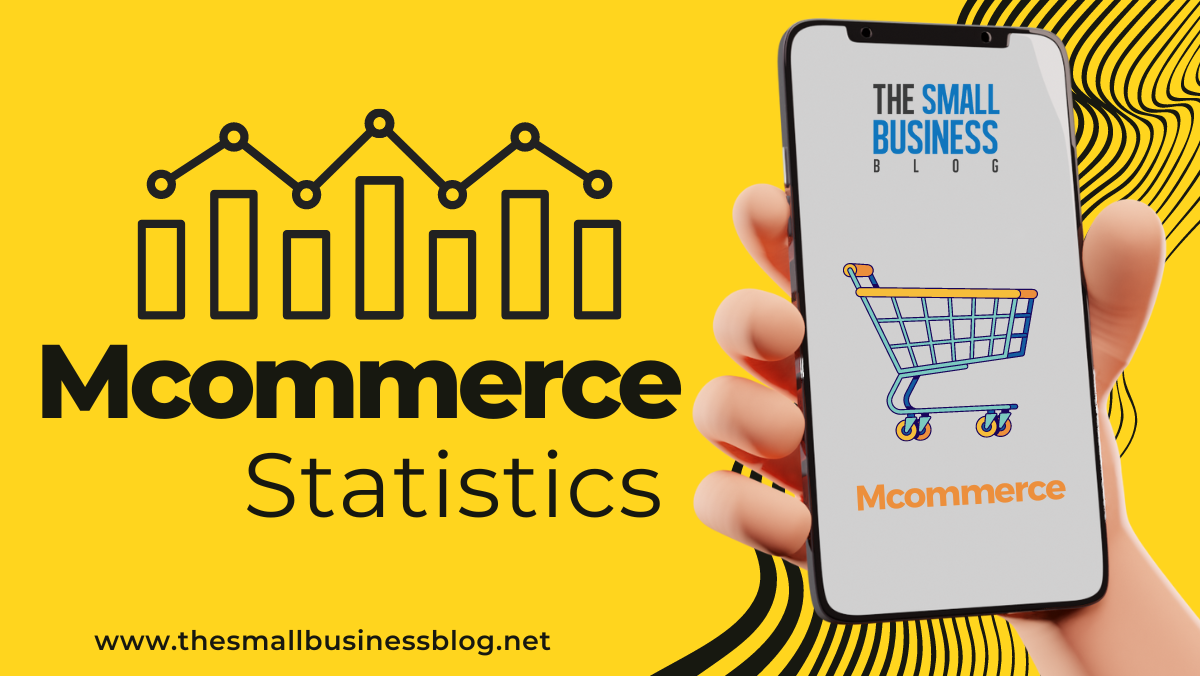Mcommerce is rapidly becoming more popular.
In essence, any transaction that is completed via the use of a mobile device can be counted as mcommerce.
The predominant mobile device is your cell phone.
However, tablets can also be considered mobile devices and are surprisingly popular, as are laptops.
Currently, there are 6.92 billion smartphone users, that’s approximately 85% of the global population.
Interestingly, there are closer to 15 billion mobile devices, illustrating how many people have smartphones and tablets or other types of mobile devices.
As the following mcommerce statistics will show, this field has been growing rapidly for years.
It’s naturally taken a larger market share as technology has improved the capabilities of phones.
Today, a cell phone is often more powerful and uses faster processors than a computer, making it the simplest, fastest, and most convenient option when connecting to the internet.
You’ve probably already used mcommerce without realizing it.
For example, purchasing a car parking ticket with your mobile, paying a bill online, or even ordering something from a website.
If you’ve done any of these with your mobile device then you’re using mcommerce, and confirming why it is becoming so popular.
To many, mcommerce is the logical progression from ecommerce.
The only question is whether all transactions will be done via mobile in the future or will the desktop still have a place.
Post Contents
- 1 Key Statistics
- 2 Top Mcommerce Statistics in 2024
- 2.1 1. US Retail Mcommerce Sales Total $431 Billion
- 2.2 2. Amazon Is The Second Most Popular Shopping App
- 2.3 3. Mcommerce Is 73% Of All Ecommerce Sales
- 2.4 4. 79% Of Smartphone Owners Have Purchased Something With Them
- 2.5 5. In 2021 Global Mcommerce Revenue Reached $3.5 Trillion
- 2.6 6. The Average Value Of A US Mcommerce Transaction Is $100
- 2.7 7. 35% Of Mobile Shoppers Use Mcommerce More Than Once A Week
- 2.8 8. 60.9% Of US Residents Use Mobile Payment Options
- 2.9 9. Social Media Is A Major Influencer Of Sales
- 2.10 10. 88% Of Mobile Shoppers Have Had A Negative Experience
- 2.11 11. 80.6% Of Americans Have Mobile Wallets
- 2.12 12. 67% Of Consumers Have A Retailer App
- 2.13 13. 67% Of Consumers Window Shop Via Mobile
- 2.14 14. 83% Of Shoppers Are Simultaneously Using A Shopping App
- 2.15 15. Mcommerce Is Global: 95% Of UAE Consumers Shop Online With A Smartphone
- 2.16 16. 54% Of Mobile Commerce Payments Are Via Shopping Apps
- 3 Summing Up
- 4 Sources
Key Statistics
- US retail Mcommerce sales total $431 billion
- Amazon is the second most popular shopping app
- Mcommerce is 73% of all Ecommerce sales
- 79% of smartphone owners have purchased something with them
- In 2021 global Mcommerce revenue reached $3.5 trillion
- The average value of an Mcommerce transaction is $100
- 35% of mobile shoppers use Mcommerce more than once a week
- 60.9% of US residents use mobile payment options
- Social media is a major influencer of sales
- 88% of mobile shoppers have had a negative experience
- 80.6% of Americans have mobile wallets
- 67% of consumers have a retailer app
- 67% of consumers window shop via mobile
- 83% of shoppers are simultaneously using a shopping app
- Mcommerce is global: 95% of UAE consumers shop online with a smartphone
- 54% of mobile commerce payments are via shopping apps
Top Mcommerce Statistics in 2024
1. US Retail Mcommerce Sales Total $431 Billion

Retail sales made via mobile devices have been steadily increasing for years.
In 2019, mobile commerce statistics show that sales totaled $220 billion.
By 2020, in the midst of the pandemic, sales increased to $312 billion. The trend didn’t slow down after the pandemic.
In 2021 sales hit $362 billion and 2022 saw them reach $431 billion.
It’s estimated that sales will reach $511 billion, and by 2025 be as high as $710 billion.
That means, in the three years between 2019 and 2022 mcommerce sales have doubled.
These figures are based purely on mcommerce sales. If you include ecommerce the figure increases dramatically and is likely to continue doing so.
(Statista)
2. Amazon Is The Second Most Popular Shopping App
You can access traditional websites from a mobile device, go to a mobile-friendly version of the site, or download the app.
If you’re a regular visitor to a site then downloading the app is often the most sensible option.
It will allow you to quickly access the store and purchase what you want with minimal fuss.
Of course, the first time you use the site you’ll have to download the app.
This usually takes a few moments.
According to Statista, Amazon is one of the most popular shopping apps in the US.
First place actually goes to the Walmart app with over 120 million people using it every month.
Amazon comes a close second with 98 million active monthly users.
In the US alone, the Amazon app has been downloaded 35 million times, which was just in 2022.
Of course, globally, Amazon has over 200 million active monthly users and is considered the most popular shopping app in the world.
It’s also the most downloaded app.
Amazon’s popularity stems from a solid business reputation and a commitment to providing the best possible service.
(Statista)
3. Mcommerce Is 73% Of All Ecommerce Sales
Ecommerce encompasses any sale made via an electronic device.
That includes smartphones, tablets, and even desktops.
In essence, any time something is bought when you are not physically present, you’re undertaking an electronic transaction.
What’s interesting about the latest Zippia study is that 73% of all ecommerce sales are a result of mcommerce.
This illustrates that mobile devices aren’t just convenient to look up information, they are also the preferred way to complete a purchase.
A trend that is highly likely to continue.
This figure can be broken down further. The Zippia study also found that 44% of all ecommerce sales were completed via smartphone.
That means over half of mcommerce sales are done on a smartphone.
(Zippia)
4. 79% Of Smartphone Owners Have Purchased Something With Them
The majority of people in the Western world have a smartphone.
In fact, a huge number of people across the globe have access to a smartphone.
As mentioned, 85% of the global population has access to a smartphone.
The result is an increasing number of smartphone users have used the phone to purchase something.
It’s simply more convenient.
You can pause anything, purchase an item, and then carry on with what you are doing.
The whole process takes a few minutes and is easy because your smartphone is with you and already turned on.
The latest figures from Zippia confirm the trend of purchasing via smartphone.
The study found that 79% of smartphone owners have purchased at least one item with a smartphone.
(Zippia)
5. In 2021 Global Mcommerce Revenue Reached $3.5 Trillion

The mcommerce revenue generated by the US is only a fraction of the amount generated by the world economy.
Currently, US mcommerce transactions account for 11-12% of global mcommerce revenue.
In a testimony to how popular mCommerce has become, as of 2021 global mcommerce revenue reached $3.5 trillion.
That’s according to the latest figures by Zippia.
The amount generated has increased by 35% since 2020 and is likely to increase further.
Estimates suggest the revenue will exceed $5 trillion by 2027.
(Zippia)
6. The Average Value Of A US Mcommerce Transaction Is $100
It can be difficult to find an average transaction value as several large transactions can easily counteract the majority of small ones.
At present, the average US mcommerce transaction value is $100.
Interestingly, mobile phone transactions are, on average $94.85, while transactions completed using a tablet average $101.96. These figures relate to 2021.
This value fluctuates slightly.
As the second quarter of 2022 shows, tablet transactions were, on average $95.51 and mobile phone transactions had an average of $112.29.
It’s worth noting that desktop transactions for the same period are higher, potentially because people will do more research before committing to larger purchases and these are easier to do on a desktop.
For 2021 the average spend per transaction on a desktop was $143.34. In 2022 this increased to $155.75.
(Zippia)
7. 35% Of Mobile Shoppers Use Mcommerce More Than Once A Week
Over half of all US ecommerce sales are actually mcommerce sales.
The figure has risen by 9% in just one year, illustrating how popular mcommerce is becoming.
The result is that mcommerce is now 6% of all sales and this percentage is likely to increase.
A recent survey by Zippia located people who use mcommerce to purchase items.
Of those that do, 35% of them use mcommerce for multiple purchases every week.
Almost a quarter of them, 22%, undertake a mcommerce transaction every day, and a staggering 21% do multiple mcommerce transactions daily.
It would appear that most people who use mcommerce are committed to the process.
As few as 19% only complete an mcommerce transaction once a week.
Just 3% consider themselves mobile payers but rarely use the service.
(Zippia)
8. 60.9% Of US Residents Use Mobile Payment Options
Over half of the US population, an estimated 167.8 million people, use mobile platforms to pay bills and order items.
That’s 60.9% of the population.
It’s worth noting that some of these buyers are not legally adults but this doesn’t stop them from paying via mcommerce.
In fact, this generation is the most likely to pay in this way.
This figure is going to increase, estimates suggest it will hit 187 million by 2024 and two-thirds of the population by 2028.
It’s worth noting that 49.8% of digital purchases are made using mobile devices.
That means 50.2% are made using desktop computers but their majority share is reducing and likely to dip below mobile purchases within the next couple of years.
Of the 49.8% of digital purchases completed by mobile devices, 46.5% are via smartphones and just 3.25% via tablets.
(Zippia)
9. Social Media Is A Major Influencer Of Sales
Having a social media presence is vital for the success of any business.
It’s the simplest way to reach existing and new customers, as well as promote a brand and improve brand recognition/awareness.
Research shows that businesses with a social media presence generally generate 32% more sales than businesses in the same industry without a social media presence.
To illustrate the power of social media, consider this.
55% of buyers will make a purchase after seeing the item on social media. It helps the item appear genuine.
This is reflected in another finding uncovered by the survey, that 90% of people prefer to buy something from a brand they are already following on social media.
In other words, a relationship and trust have already been established.
That’s what social media is so effective at doing.
As many as 60% of consumers will look at social media before choosing a new product.
Specifically, they will read the reviews on social media.
49% of these consumers state that they won’t buy unless they find positive social media reviews or recommendations.
(Zippia)
10. 88% Of Mobile Shoppers Have Had A Negative Experience

The majority of businesses know that a negative experience will lead to bad reviews and, if not handled promptly and fairly, can be seriously damaging to the business.
Yet, despite this, a recent Zippia survey discovered that 88% of mobile shoppers have had a negative experience.
The most common negative issue encountered was difficult navigation.
51% of people complained this was an issue.
The survey found 46% of people had an issue with images being too small and 41% of respondents had a negative opinion of site security.
A further 26% of respondents were not happy with the checkout process.
The result was that 36% of people abandoned their shopping, a direct loss to the business.
Of more concern to the businesses involved should be the fact that 33% of mobile shoppers in the survey admitted they would immediately switch to a different supplier.
They were unlikely to ever use the original supplier again.
Just 29% of respondents said they would consider using the site again, but not for at least six months.
As an mcommerce business, it’s essential to deal with any negative issues raised promptly.
(Zippia)
11. 80.6% Of Americans Have Mobile Wallets
In 2020 it was estimated there were 2.8 billion mobile wallets in the world.
Approximately half of these were in Asia. Estimates suggest there will be 4.9 billion by 2025.
Currently; 5% of all online transactions are made with a mobile wallet.
However, the latest studies show that 80.6% of Americans already have a mobile or digital wallet.
The main reason for this is the speed at which you can complete a transaction and how convenient the digital wallet is.
The most common and popular examples of mobile wallets are Google Pay and Amazon Pay.
The premise is simple, your credit cards and other payment methods are securely stored on your phone, in a dedicated vault.
Some apps store the details on your phone, others store them in the cloud.
When you want to pay you simply select the payment method on your phone and hold it up to the card reader.
The payment is processed and you’re effectively completing a mcommerce transaction in a physical store.
This is one of the main reasons mcommerce use is going to dramatically increase in the next few years.
(Statista)
12. 67% Of Consumers Have A Retailer App
The majority of larger brands already have an app.
Those that don’t are creating one, and even many smaller businesses are designing apps.
The process has become simpler than ever.
There’s a good reason for this interest in apps. The current statistics show that 67% of consumers have downloaded a retail app within the last year.
Some have downloaded the app to benefit from a coupon, one of the latest marketing ploys by many brands. Others do so because they are encouraged to do so by the brand.
Of course, others choose to download the app to use it for shopping.
Apps are generally faster and more secure.
It’s the retailer who benefits the most, even if they are giving away discounts via coupons.
They gain valuable customer information and a way to track purchases.
This gives them a better understanding of their customer and what other products they can offer.
(Synchrony)
13. 67% Of Consumers Window Shop Via Mobile
For many, window shopping has always been a viable pastime.
However, it’s no longer necessary to walk down the high street.
Mobile websites and apps have made it possible to browse from your phone.
The process is the same, an excellent way to look at things you would love to own, even if you don’t have the funds at present
However, mobile window shopping is different.
The latest report by Pixel Union shows that, despite not intending to, 77% of those mobile window shoppers end up purchasing something.
The reason is likely to be attractive pricing coupled with coupons offering discounts.
For the business is a win, and the reason why many businesses have, or are going to build their own app.
(Pixel Union)
14. 83% Of Shoppers Are Simultaneously Using A Shopping App
The average American spends three hours on their smartphone every day.
It’s not surprising, you can do everything from a smartphone and it’s always with you.
That’s why it has become such a useful shopping tool.
But, what the latest Scandit survey found was that 83% of shoppers aren’t just shopping on their smartphones, they are downloading apps and using them when they are out.
In other words, they are shopping for something specific in a physical store and then looking the same item up online.
The idea is to find it cheaper online after testing the product in-store.
It helps to ensure you’ll be happy with the purchase but get it for the best possible price.
This approach can be hard for physical stores to compete with.
That’s why many businesses with physical premises are investing in apps. They are not only expected but also helps the business compete with itself!
(Scandit)
15. Mcommerce Is Global: 95% Of UAE Consumers Shop Online With A Smartphone

It’s not just the US or even the Western world that is embracing mcommerce.
The latest figures from VISA Middle East show that 95% of consumers in the United Arab Emirates have been using their smartphones to purchase items since at least 2020.
The reasons are the same as elsewhere in the world, convenience, practicality, and speed.
It’s worth noting that the UAE has a reputation for being quick to adapt to new technologies, especially when they involve better payment options.
Other countries are displaying similar trends.
For example, 52% of Malaysian consumers are already using smartphones to pay for their online shopping activities.
Even the UK is following the same trend.
Statista estimates 87% of UK households have made online purchases in 2020 and the figure has risen since.
Equally, 54% of all the ecommerce in the Czech Republic has been conducted via the use of smartphones.
(VISA Middle East)
16. 54% Of Mobile Commerce Payments Are Via Shopping Apps
Mobile commerce covers any type of shopping done from a mobile device.
Yet, while it’s possible to visit websites and order using your mobile device, it seems that consumers prefer to buy online via shopping apps.
Currently, 54% of all mobile commerce payments are connected to shopping apps and, in recent years, this figure has been rising.
It’s likely because mobile payments are generally faster and simpler than any other payment type.
A shopping app is also generally faster and simpler than a company website.
In other words, consumers are choosing the most convenient option, which happens to be shopping apps.
Interestingly, 44% of ecommerce transactions are completed on a mobile device, showing this is a less popular option than mobile commerce apps.
(Zippia)
Summing Up
The mcommerce statistics paint a clear picture of an industry growing in popularity.
The global pandemic can be said to have sped up the speed at which businesses and consumers have chosen to adopt mcommerce.
However, the trend was already clear and has continued to grow in recent years.
The majority of transactions will likely be handled by mcommerce by 2030.
Many people already view mcommerce and electronic payments as the way of the future.
It’s certainly easier for consumers and presents businesses with excellent opportunities to collect additional data on consumers.
Of course, this means the mcommerce industry will become increasingly competitive, making it harder for new businesses to get a foothold.
Consumers will benefit from the array of promotions on offer, all designed to encourage the growth of mcommerce.
As a business, if you haven’t already started investing in mcommerce, now is definitely the time to start.






























